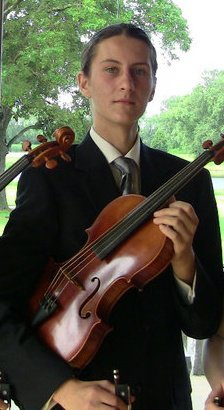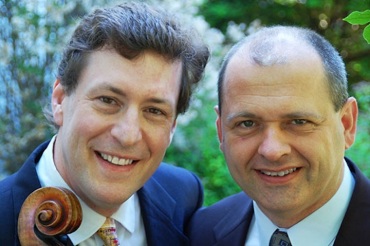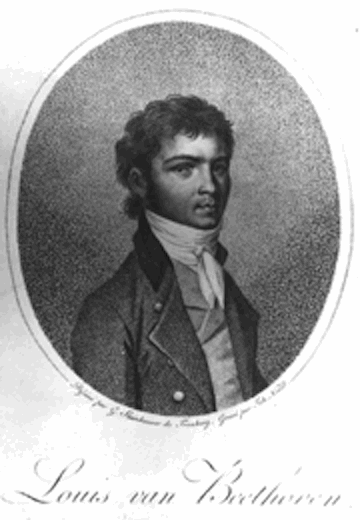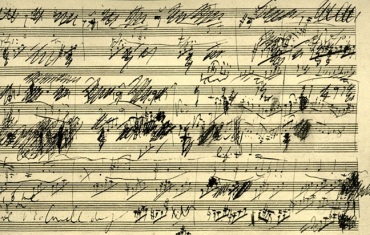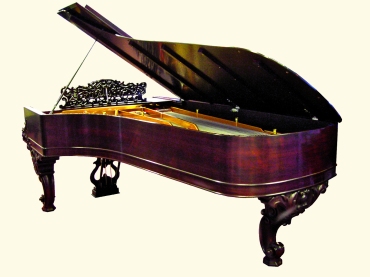The Well-Tempered Ear
Classical music Q&A: Do cellist Parry Karp and pianist Eli Kalman have favorite cello sonatas by Beethoven? What should audiences listen for this Friday night and Sunday afternoon? How did the two performers meet and develop their collaboration? Part 2 of 2. Plus, violist Mikko Utevsky gives a FREE recital of J.S. Bach and Shostakovich on Saturday night.
6 Comments
ALERT: Mikko Utevsky — a prize-winning UW student violist as well as sometimes Madison Symphony Orchestra player and the founder-conductor of the Madison Area Youth Chamber Orchestra (MAYCO) — will give a viola recital at Capitol Lakes Retirement Home, 333 West Main Street, off the Capitol Square, at 7 P.M. this SATURDAY (NOT Thursday) night, April 20, and would love for a big audience to attend the FREE concert. The ambitious program includes playing J.S. Bach‘s Cello Suite No. 5, transcribed for viola; Dmitri Shostakovich’s late Viola Sonata; and a Kaddish by Tzvi Avni. Utevsky (below) will be accompanied by pianist John Jeffrey Gibbens. A reception will follow the concert.
By Jacob Stockinger
This weekend brings one of the major and memorable events of the current season: Performances in two parts of the complete original works for cello and piano by Ludwig van Beethoven (1770-1827).
The performances will take place this Friday night at 7:30 p.m. and this Sunday afternoon at 4:30 p.m. (NOT 3:30 p.m. as mistakenly first listed) in the concert hall at Farley’s House of Pianos, 6522 Seybold Road, on Madison’s far west side, near West Towne Mall.
The performers are longtime collaborators: University of Wisconsin-Madison professor of cello and Pro Arte Quartet cellist Parry Karp and UW-Oshkosh professor of piano Eli Kalman, who received his doctoral degree from the UW-Madison School of Music.
Tickets are $25 for each individual concert or $40 for the package of two. For more information call (608) 271-2626, go to Farley’s website. Here is a link:
http://www.farleyspianos.com/pages/events_main.html
Here are the programs for the two concerts:
Friday at 7:30 p.m.: Sonata In C Major, Op. 102 No. 1 (1815); Sonata in F Major, Op. 5 No. 1 (1796); Seven Variations on a theme “Bei Männern, welche Liebe fühlen” from Mozart’s opera, The Magic Flute, WoO 46 (1801); Sonata In D Major, Op. 102 No. 2 (1815)
Sunday at 4:30 p.m.: Twelve Variations on a Theme from Handel’s Oratorio “Judas Maccabeus,” WoO 45 (1796); Sonata In G Minor, Op. 5 No. 2 (1796); Twelve Variations on a theme “Ein Mädchen oder Weibchen” from Mozart’s opera, The Magic Flute, Op. 66 (1798); Sonata in A Major, Op. 69 (1807-8)
Both Parry Karp (below left) and pianist Eli Kalman (below right) agreed to answer a wide-ranging email Q&A. This is the second of two parts. The first part was posted yesterday and covered the evolution and development of Beethoven writing for the cello and piano throughout his career.
Do you both have favorite works among Beethoven’s sonatas for cello and piano? Which ones and why?
Parry Karp: It sounds like a cliché, but whatever work I am playing at the moment is my favorite. A week and a half ago Eli and I played three of the works for the Music in Performance class at the University of Wisconsin-Madison.
We played an early sonata, a sets of variations and a late sonata. We were both struck by how completely different each work was and how magnificent they all were. The range is extraordinary. As my father (retired UW pianist Howard Karp) is fond of saying about Beethoven (below is a print of the young Beethoven): “He was great from the beginning, he just kept changing.” Probably the first Cello Sonata is the least performed, but when you are performing it, it is an overwhelming experience.
Eli Kalman: The one you are playing has always to sound like your favorite -– that is so true. But personally, I have a very strong connection to the fourth sonata, Op. 102, No. 1 (at bottom, in a YouTube video), and I am happy to overlook the words for the reasoning. I could advocate for any sonata as for the first favorite in a rational manner, but I choose to go with my strongest emotional reaction regarding the fourth sonata.
What would you like audiences to listen for or hear in your performances of these works? Are there neglected works you would especially like people to pay attention to?
Parry Karp: In general, I don’t like to tell audiences what to listen for in performances. I think these works can be enjoyed and understood in many different ways and on many different levels. In fact every time I play, listen or study them I find new things.
However the works do demand intense concentration from the listener as well as the performer! This music doesn’t work as background music.
In addition to the sonatas, we are performing the three sets of variations that Beethoven wrote for piano and cello. The variation form is one that also held interest for Beethoven from early in his compositional career right through to the huge “33 Variations on a Theme of Diabelli” at the end. He was a master at writing variations and these three sets show that well. (Below is a manuscript sketch of Beethoven’s most popular Cello Sonata, Op. 69.)
Eli Kalman: It is fascinating to follow the composer’s mind at work along with the musically beautiful of many sorts. Instrumental musical treatment is usually of abstract nature but can turn also operatic at times. The singing and the interplay are worth listening to and the passion and the dedication with which the potential of the duo unfolds.
The collaboration is complex, exciting and never really predictable. It is like a mountain of piano sound and one happy hiker — the cello climbing towards the highest peak.
You have played together a lot. Can you recall first getting together and tell us what makes your partnership – or any partnership — so successful?
Parry Karp: I first met Eli Kalman through a door! I walked by a studio and heard a pianist practicing Schumann’s Piano Sonata in F-sharp minor, a work rarely heard. I knocked on the door to find out who this excellent pianist was, and it was Eli.
It turned out he was in Madison auditioning for the graduate program in Collaborative Piano. He arrived in Madison the following fall in the graduate program and had an immediate impact on our string program.
He was very generously making it possibly for all of our advanced string students to perform the great piano-string duo repertoire of Mozart, Beethoven, Schumann, Brahms, Respighi, Bartok, Rachmaninoff, etc.
After a year Eli asked if we could do some playing together. I was only too happy to oblige. We have been performing together since that time, some 11 years. We have explored both much of the well-known repertoire as well as many works that we consider unjustly neglected works. It is always a great treat to have Eli as a duo partner.
Eli Kalman: Parry was the most inspiring musical figure of my last musical decade starting from his own recitals in which he was never letting go easily of any note and all the way to the his insatiable appetite for music. I never met somebody hanging on with so much passion to every measure — quite a model to follow!
How did we start? As a student, I told him once about my dream of including Rachmaninoff’s cello sonata and Ravel piano trio in my repertoire and he commented warmly: “You had a dream, let’s make this happen” – and this is how it started. Ten years later, we have shared so many wonderful and often challenging stage experiences in which we stay together serving music the best we can and continue to marvel about its powers.
Is there anything else you would like to say or add?
Parry Karp: We are very excited to be performing these seminal works at Farley’s House of Pianos, a beautiful intimate space, and a perfect environment for hearing these pieces. Eli and I rehearsed there yesterday and it was a wonderful treat.
There was a plethora of great pianos to chose from, “an embarrassment of riches” as it were. We picked an 1877 “Centennial” Steinway Concert Grand (below), lovingly and magnificently rebuilt by Farley’s. It seemed perfect for these two upcoming recitals.
Eli Kalman: One is fortunate if the repertoire, the partner and the concert series are special. In this case, Farley’s unique restoration of this piano is a significant addition to other aspects. Performing Beethoven’s complete cycle of piano and cello works is one of the most exciting moments of my musical life. We are looking forward to it very much!
Tags: Beethoven, Cello, Cello Sonata, Cello Suite, Dmitri Shostakovich, Eli Kalman, J.S. Bach, Jacob Stockinger, Ludwig van Beethoven, Madison, Madison Symphony Orchestra, Magic Flute, Parry Karp, Piano sonata, Pro Arte Quartet, University of Wisconsin–Madison, Viola, West Towne Mall, YouTube
